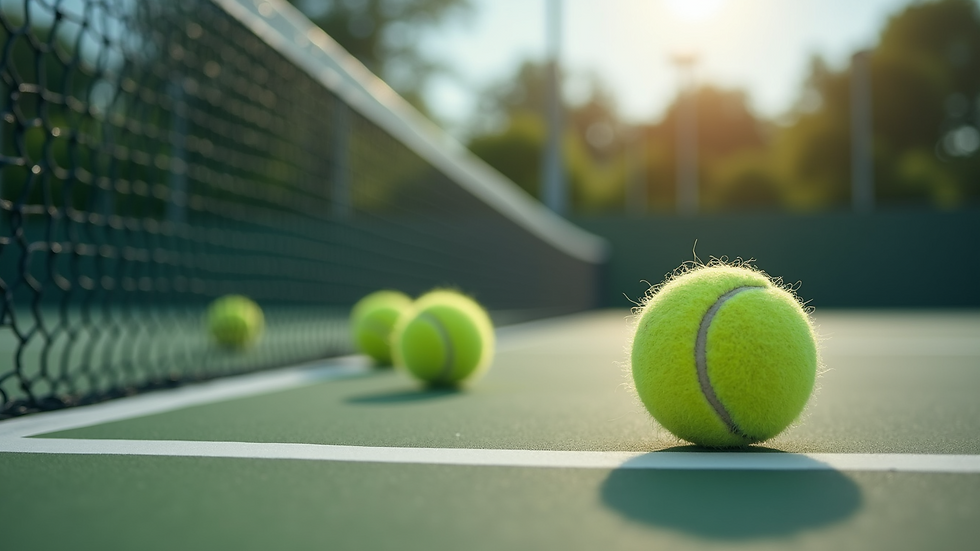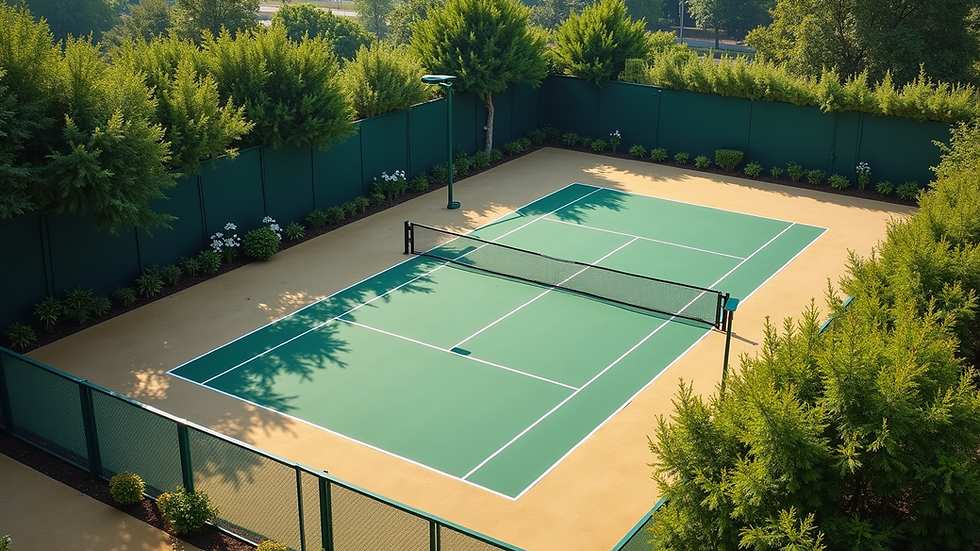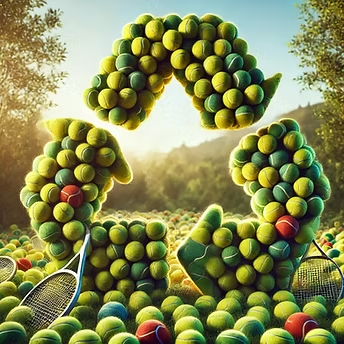Innovative Recycling Programs for Used Tennis Balls
- Bark Balls

- Jul 22
- 4 min read
Tennis is one of the most loved sports globally, with millions of players hitting the courts every day. However, with this enthusiasm comes the inevitable issue of used tennis balls. Most tennis balls cannot be recycled through regular programs due to their composite materials. Fortunately, several innovative recycling programs for tennis balls are emerging to combat this problem and promote sustainability.
Recycling Programs for Tennis Balls
Various initiatives are currently addressing the challenge of disposing of used tennis balls in an environmentally friendly way. These programs transform what would typically be waste into valuable materials for a wide range of applications. The commitment to sustainability in tennis is growing, and these programs are at the forefront of this movement.
For instance, ReBounces is a notable program that repurposes used tennis balls instead of tossing them into landfills. They provide a recycling box at tennis clubs, where players can drop off their old balls. These balls are then reconditioned and reused. This not only keeps the balls from entering the waste stream but also offers cheaper options for players who need practice balls.

Another significant initiative is the Bark Balls program, where recycled tennis balls are transformed into eco-friendly products, including dog toys. Their mission is to promote sustainability and support local charities by repurposing those old tennis balls that would otherwise be wasted. Joining a tennis ball recycling program like Bark Balls not only helps the environment but also helps various organizations in need.
Benefits of Recycling Tennis Balls
Recycling tennis balls offers multiple benefits that extend beyond simply reducing waste. For players and clubs alike, understanding these advantages can inspire more participation in such programs.
Environmental Impact: The primary benefit of recycling is the positive impact on the environment. Each year, millions of tennis balls are discarded, contributing significantly to landfill waste. By recycling, we reduce this pressure on landfills.
Cost-Effective Alternatives: For tennis clubs, using recycled balls means significant savings. Using reconditioned balls for practice courts can cut down costs while still providing good quality for players.
Community Support: Many recycling programs support local charities or community projects. By participating, players and clubs can contribute to important social causes, making their tennis activities more meaningful.
Innovation in Products: Recycled tennis balls can be transformed into unexpected products. For example, companies are creating padding material for sports equipment, flooring solutions, and even construction materials using repurposed tennis balls.

How to Get Involved
Getting involved in these innovative recycling programs is simple and straightforward. Here are some practical steps to take:
Participate in Local Programs: Check if your local tennis club has a recycling program. Many clubs now have designated drop-off bins for used balls, making it easy to donate.
Spread the Word: Encourage fellow players to recycle their used tennis balls. Awareness is key, and by sharing information about recycling options, you can promote community involvement.
Create Your Own Initiative: For tennis clubs or organizations, consider launching your own recycling program. You can set up bins at your facilities and collaborate with local recycling initiatives to process the balls.
Educate Yourself and Others: Stay informed about the newest recycling technologies and innovations. The more you learn, the better equipped you will be to advocate for sustainable practices in tennis.
The Future of Tennis Ball Recycling
Looking forward, the future of tennis ball recycling is promising. As sustainability becomes a higher priority, more innovative solutions will emerge. We can expect greater partnerships between sports organizations and recycling companies, leading to a more robust infrastructure for recycling tennis balls.
One exciting development is the exploration of biodegradable tennis balls. Some companies are developing balls made from natural materials that break down over time. This move toward sustainability could revolutionize how we think about not just recycling but the entire lifecycle of sports equipment.

Challenges and Solutions
While the prospect of tennis ball recycling is bright, several challenges remain. Awareness and participation in recycling programs can often be low. To overcome this, enhanced communication strategies and community engagement activities can help increase visibility.
Another issue is the varying quality and cleanliness of used balls submitted for recycling. Establishing clear guidelines for what constitutes acceptable donations can help mitigate this problem, ensuring that materials processed for recycling meet quality standards.
Making a Difference
Participating in innovative recycling programs for used tennis balls may seem like a small act, but collectively, it can lead to substantial environmental benefits. From individuals to clubs, every contribution counts. By promoting recycling practices, we contribute to a cleaner future for our planet.
Whether you are a casual player or a coaching professional, there is always a way to get involved. Investigate a tennis ball recycling program near you, and encourage your peers to participate too. Remember, the future of tennis not only depends on how well we play; it also lies in how we manage our materials sustainably.
In conclusion, the world of tennis is beginning to embrace the importance of recycling used tennis balls creatively. With every bounce of the ball on the court, we have the chance to create a positive impact on the environment. Together, we can work towards making tennis not only a sport but also a part of sustainable living.




Comments